
Read about the Big Four as you shop our collections of astonishly beautiful gemstones. Not just the accepted Big Four of the precious stones, but also the four key criteria which are used to determine their objective market value as precious stones.
WHAT ARE THE FOUR PRECIOUS STONES?
The four precious stones as defined in the international market are Diamond, Ruby, Emerald, and Sapphire. These are typically the gemstones you’ll see in crowns, swords, jewelry, weaponry, sacred and precious objects worn by the royalty of many cultures. This has been the case for many centuries.
Our passion is color, and we specialize in juicy, delicious, sexy, energetic, exciting, brilliantly colored precious gems.Like candy!
Because we think life is better in living color, don’t you agree?
It may surprise you to learn that the fancy-color gems we offer are literally rarer than diamonds. You may also be surprised to learn that many other stones that you admire, including opal, pearl, amethyst, citrine, topaz, and aquamarine, are considered semi-precious.
HOW ARE THE FOUR PRECIOUS STONES EVALUATED?
Determining the value of the top four precious gemstones—diamond, emerald ruby, and sapphire-- is based upon several related criteria.The first criterion is that the stone is organic, meaning that it grew in the earth over the course of millions of years, and was extracted from a mine, not cooked up in a laboratory.
More on that later.
The term “natural” may be a bit confusing when discussing gemstones. It is true that every precious gem is natural, in the sense that it formed in the earth over the course of millions of years, and was not synthesized in a lab. However, many precious stones are treated with heat or other techniques after they are mined, to enhance their color and brilliance. In this sense, they are not strictly natural.
These treatments do not change the fact that they are stones mined from the earth.
Usually, these treatments do not affect the claim of authenticity or the value of the precious stone.
Another potentially confusing term is the word “genuine.” From a chemical point of view, a stone synthesized in a lab contains the same compounds as the counterpart stone mined from the earth. That’s right: a lab-made pink sapphire contains the same chemical components as the pink sapphire painstakingly dug up from miles below the earth’s surface, where heat and pressure did their magic over the course of thousands of lifetimes.
This explains how, when browsing eBay, you may encounter a “genuine” pink sapphire or other gemstones for a few dollars. This gem is either a lab-created synthetic stone or may even be plastic. You should know that a synthetic lab sapphire may lose its sparkle and luster with the passage of time. The stone will not “age” as well as an organic mineral, even though it is technically a chemical twin of the natural stone. Some stones, such as popular and economical Ethiopian opals, will literally lose their color and fire in a year or two. This is not great news if you have paid for a piece of jewelry that sets a very inexpensive lab stone in a 14-karat gold setting. In which case, you have paid for the gold, since the stone is basically not worth much.
So, be sure to manage your expectations reasonably. Depending upon what you want to wear and how you want to spend, you’ll need to dig a bit deeper into how precious gems are defined and identified to be sure you’re getting what you want.
The Big Four
By the Big Four, we not only mean the big four precious stones, but also the four key criteria which are used to determine their objective market value as precious stones. The most familiar tool used for assessing the value of all gems, semi-precious as well as precious, is called the Mohs scale. This scale was created in 1812 by a German geologist and mineralogist Friedrich Mohs. It primarily measures scratch-resistance of various minerals. Softness contributes to a stone’s ranking as a semi-precious stone. For example, Turquoise ranks 5 to 6, meaning that it can absorb body oils and other elements in the environment, changing its color and dulling its polish. A diamond ranks 10 on the Mohs scale. In fact, diamonds are the hardest known substance on earth. Apart from their dazzle, this is why diamonds are used in many industrial settings, to create cutting tools and surfaces. A sapphire (pink or otherwise) ranks as a 9.
Precious gems are examined on the basis of these four criteria:
- Cut
- Color
- Clarity
- Carat
CUT
The cut is a human decision, calling into play the judgment and skill of human eyes and hands. When examining a mined gemstone, many decisions need to be made that will determine its ultimate value after cutting and polishing. The goal when cutting is to create a gemstone of the highest possible quality and the greatest possible size and density (which relates to another of the four points of measurement, namely the carat, or carat-weight). Faceting a stone, especially a hard stone—remembering that hardness is one of the additional criteria for judging a stone as precious – is an art, as well as a skill. Techniques for faceting gemstones have often been closely held family secrets for generations.
The cutter must be able to evaluate the shape of the rough stone and recognize any flaws, known as inclusions, that it contains, then navigate around these inclusions to create a pleasing, final form for the gemstone—keeping the finished gem as fiery and substantial as possible. Faceting or cutting is another key point of difference between, say, pink sapphire and a piece of turquoise.
Softer stones are usually cut and polished into a cabochon, or a smooth, rounded, polished mound shape without faceting. This is because turquoise is opaque, while a high-quality sapphire is transparent (leading to another point of examination, called clarity).
When cutting a precious stone, the goal is to maximize the sparkle, color, and clarity while maintaining as high a carat-weight as feasible. There are about 15 familiar basic shapes for faceted stones. Within each shape, there may be many variations. For instance, the round cut, also called the Round Brilliant, is also known as the American Ideal or American Standard. With 57 facets, this cut is superb for capturing a stone’s brilliance and sparkle.
Originally developed exclusively for diamonds, the Round Brilliant cut is now widely used for many gems, including semi-precious favorites amethyst, citrine, topaz, and peridot.
But is a round stone your cup of tea?
A huge plus in dealing with loose gemstone experts like ourselves is that we may offer you a wide variety of cuts. We don’t believe, by the way, that diamonds are necessarily a girl’s best friend since we love the color.
But we do agree with the song lyric that promises, “Square-cut or pear-shaped, rocks don’t lose their shape.”
COLOR
Color is often the single factor that motivates someone to buy a stone or a piece of jewelry. Your birthstone maybe Ruby, traditionally thought of as July’s birthstone, but suppose that you don’t love red?
Remember that gemstones are actually defined by their chemical composition, not by their color. Diamonds are typically thought of as white. The majority of mined diamonds fall in the color spectrum between white, pale yellow, and brown. But the fact is that a diamond of extremely high value may range in color from steel gray to blue, to yellow, orange, red, green, pink, purple, or even brown and black. These are known as “fancy color” diamonds. For instance, the famous Hope Diamond, at 45.52 carats (and almost incalculable value), is a deep gray-blue.
When Jennifer Lopez received a cotton-candy pastel pink diamond engagement ring (there have been several since), the value of a rose-colored piece of the rock skyrocketed in value.
The so-called “chocolate diamond”, also called champagne or cognac diamonds depending upon the depth of color, is an example of creative marketing since these brownstones are typically not as valuable as a bright white or colorless diamond.
On a much more modest level, you may think that you don’t like semi-precious garnets, because you associate them with the classic deep red-purple wine-tone, often called “pigeon’s blood.” But garnets, like many other stones, appear in many colors. For instance, green garnets surprise many jewelry shoppers.
Judging and rating a stone’s color as a factor in establishing its commercial value is a sophisticated and technical process. Until quite recently, consistent coloration was an absolute standard of excellence in rating gemstones. Uneven distribution of color within the body of the stone would often reduce the value of the gem. But today, the opposite may be true.
Hot in the market right now: the padparadscha sapphire, a precious and meltingly delicate mixture of pink and orange. The Sanskrit name refers to the blushing petal of a lotus. The color is often gradient or variable within the body of the cut stone, and fans of this sensation describe it in terms of flamingo feathers, ripe fruit, and tropical sunsets. This delectable stone came into prominence with the 2018 engagement of British Royal Princess Eugenie, whose padparadscha is ringed by flawless white diamonds.
Also hot in today’s market: Alexandrite, a surprising stone sometimes called “emerald by day, ruby by night.” Named for Czar Alexander II, this compelling stone measuring 8.5 on the Mohs scale shifts from red to green, depending on the light source. The stone was discovered in Russia’s Ural Mountains in the 1830s and is the most precious of the three birthstones associated with the month of June (the others are pearl and moonstone). Alexandrite is also the gem traditionally associated with the celebration of a 55th wedding anniversary.
CLARITY
This aspect of any transparent stone is self-explanatory. Clarity is a prized feature of a gem, meaning the absence of inclusions. A poor-quality stone will display inclusions that are visible to the naked eye. Looking at this type of stone even without a jeweler’s loupe or other magnification, you’ll see specks or flecks. A stone with poor clarity will appear milky, murky, fuzzy, and dull. The color will seem diluted, grayed-out, and not brilliant.
Beyond what you can see with your own eyes, gemologists examine stones with intense magnification and observe and note tiny flaws that diminish the fire and brilliance of the gem in more subtle ways.
CARAT
Like clarity, this form of measurement is self-explanatory. Back to our original conversation: taste is personal. You may or may not like massive stones. How you wear a ring, pendant or bracelet depends upon the size of your hand, whether you layer and stack, your budget, and your own individual style. But in terms of objective market value, size matters! Bigger is better when all of the other key factors are well-represented. Obviously, a very large, near-perfect stone will be more valuable than a smaller stone of equal quality, unless there is some other aspect of provenance, meaning history or other meaning (such as belonging to a Czarina, or Jennifer Lopez).
Carat-size is the moment of truth when considering a precious stone. Everyone in the long chain of artisans and dealers who have brought the stone from its home in the earth to your skin has had to make many decisions. Often, a cutter is forced to choose between clarity and carat-weight, for instance. If the size is the primary priority, the cutter may choose to permit more inclusions in the stone. This means that your stone will be bigger but filled with more inner imperfections. If the pure fire is the goal, the cutter will sacrifice size and weight and carve away areas of mass containing those inclusions, resulting in a smaller stone with more impeccable composition, more fire, more radiance, and perhaps as much if not greater value than the larger, more flawed stone.
WHAT TO DO?
Think carefully about why you’re shopping for a precious stone.
For its sheer beauty?
As an investment?
As a personal statement?
To mark an important occasion?
All of the above?
If you’re interested in a gem that will appreciate in value, and never lose its color and brilliance, keep reading.
IF NOT NOW, WHEN?
We deal exclusively with stones that are mined from the earth.
Call them real, genuine, authentic, organic. These are all accurate descriptions.
They are not made in a lab.
We purchase precious minerals in their rough, uncut form, and bring them to our studio in downtown Los Angeles, where they are cut and polished to perfection.
Our passion is loose, unset stones of exceptional quality.
Our specialty is color, in the form of exceptional spinels, sapphires, and tourmalines.
And we can open your eyes to the beauty of stones you may not know -- zoisite, kyanite, kornerupine, chrysoberyl, sphene, and demantoid, to name a few.
We also work with gifted designers who can create and fabricate a precious jewelry setting for any stone you purchase from us.
A natural sapphire typically was formed about 150 million years ago, under intense pressure and heat, miles below the earth’s surface.
Haven’t you waited long enough?
Our professional recommendation: wear something precious now.
We’d love to consult with you in your search for the perfect gemstone. Contact us at info@heritagegemsandjewels.com or call 213.675.7766

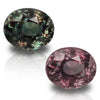 Alexandrite
Alexandrite Amethyst
Amethyst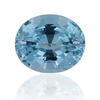 Aquamarine
Aquamarine Chrysoberyl
Chrysoberyl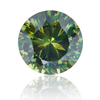 Demantoid
Demantoid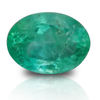 Emerald
Emerald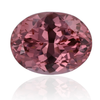 Garnet
Garnet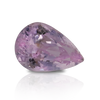 Kunzite
Kunzite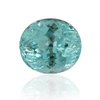 Paraiba
Paraiba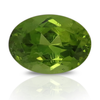 Peridot
Peridot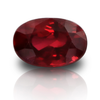 Ruby
Ruby Sapphire
Sapphire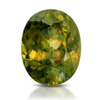 Sphene
Sphene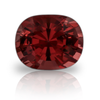 Spinel
Spinel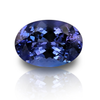 Tanzanite
Tanzanite Topaz
Topaz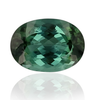 Tourmaline
Tourmaline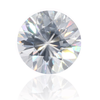 Zircon
Zircon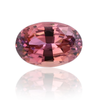 Zoisite
Zoisite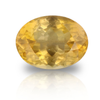 Rare Gemstones
Rare Gemstones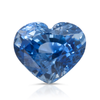 Heart Shape
Heart Shape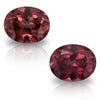 Matched Duo
Matched Duo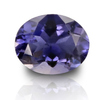 Everyday Candy
Everyday Candy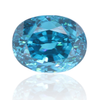 Insta Therapy
Insta Therapy Mini-Splurge
Mini-Splurge
Comments
tJprodAbFuTmgLH